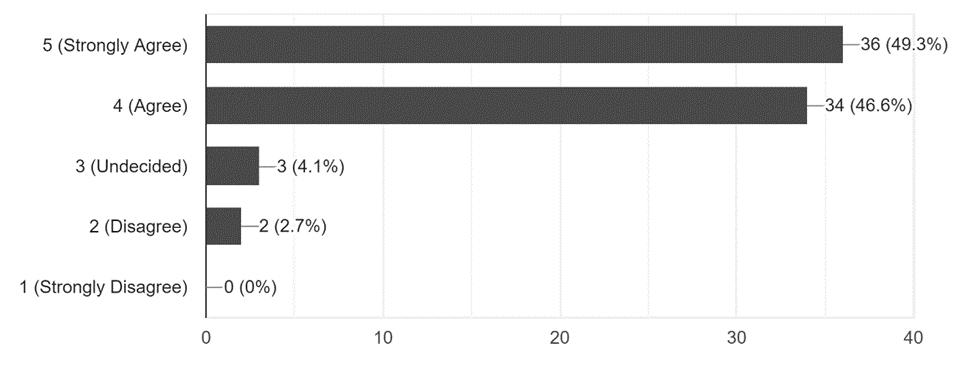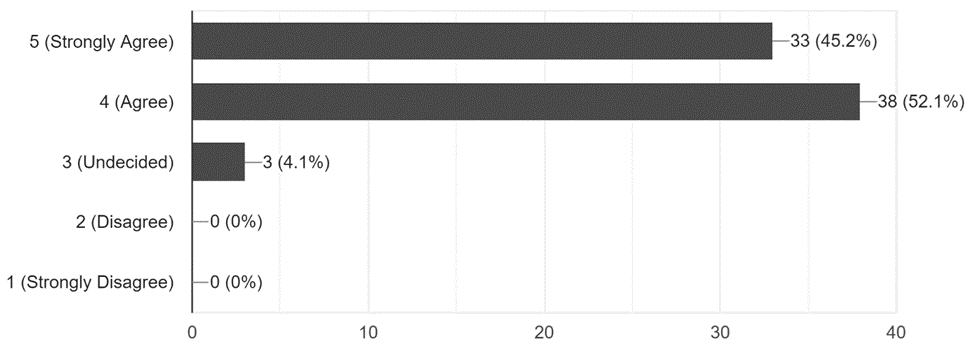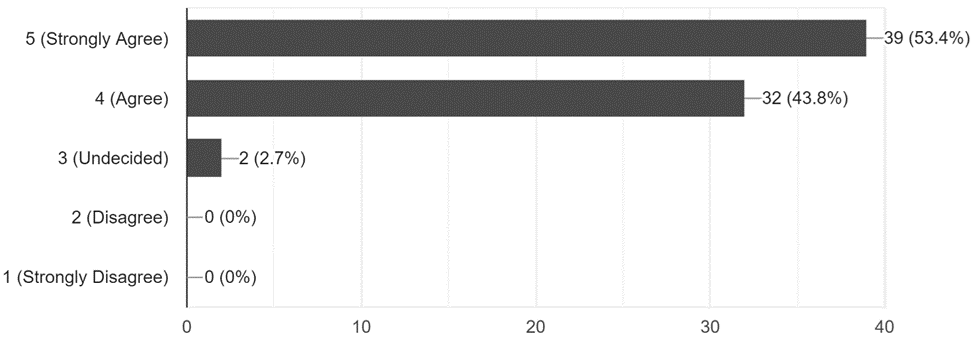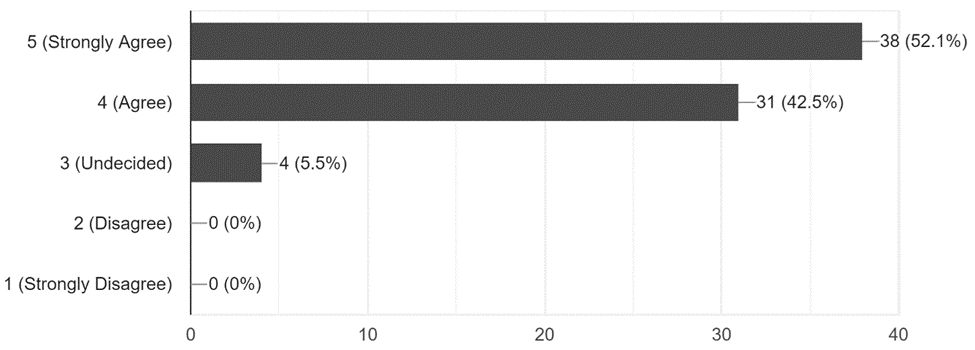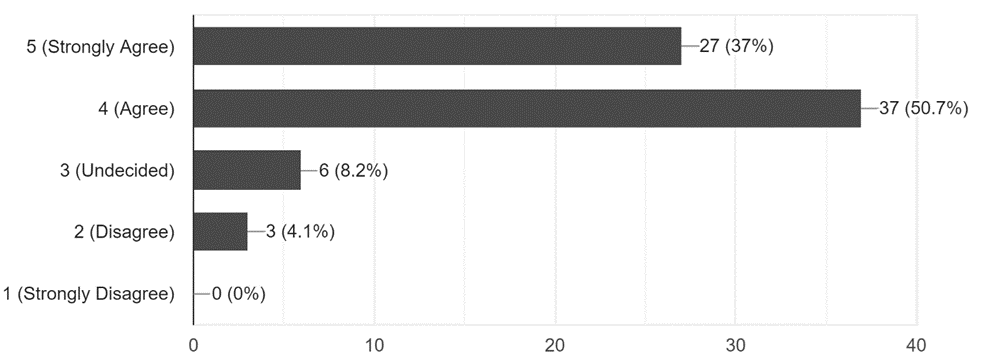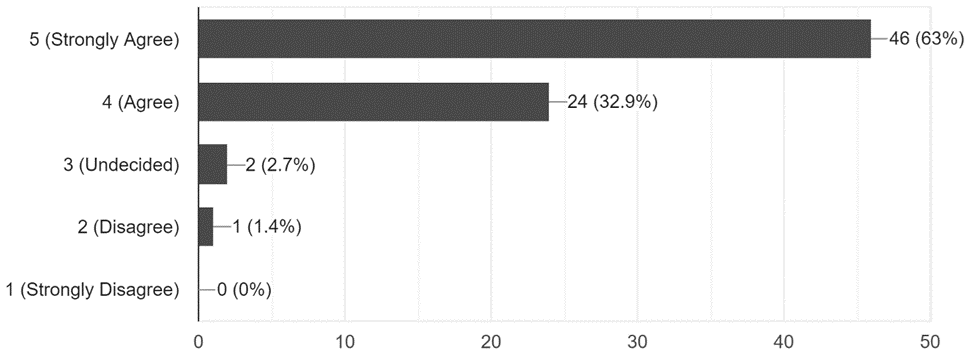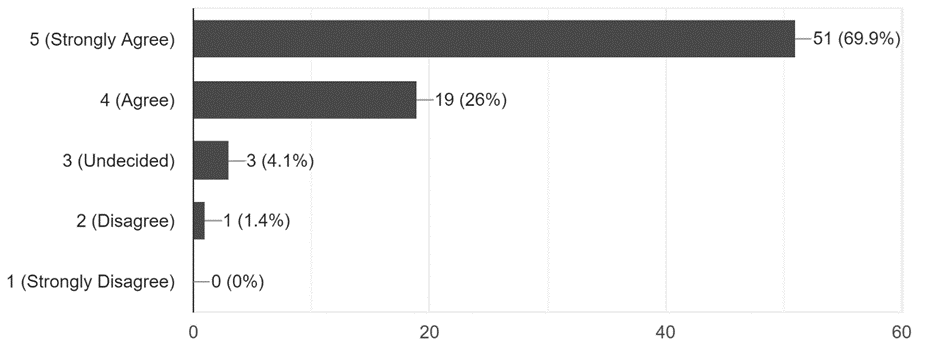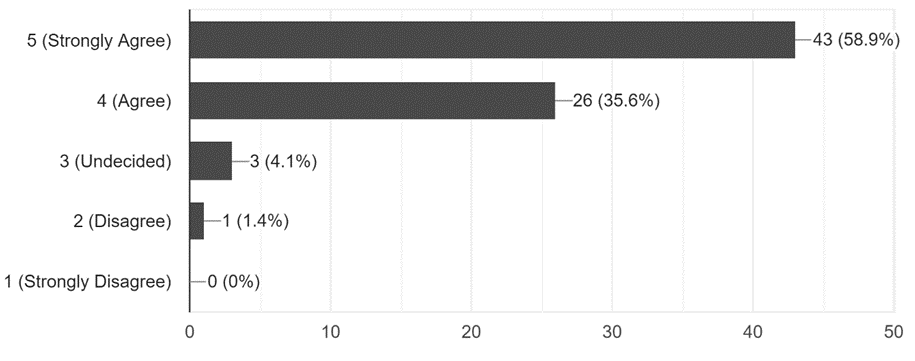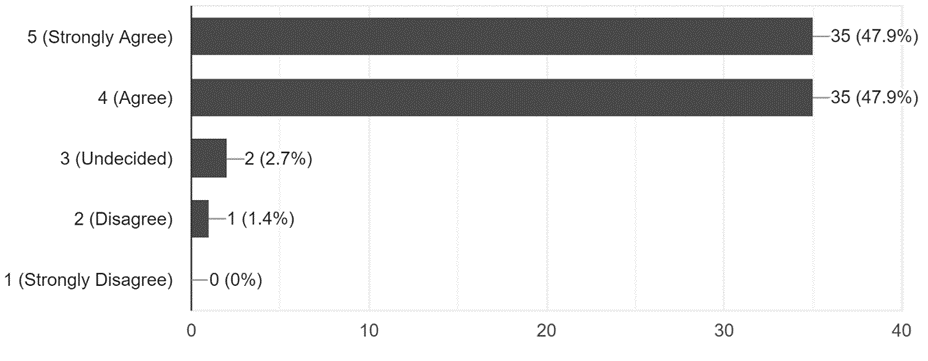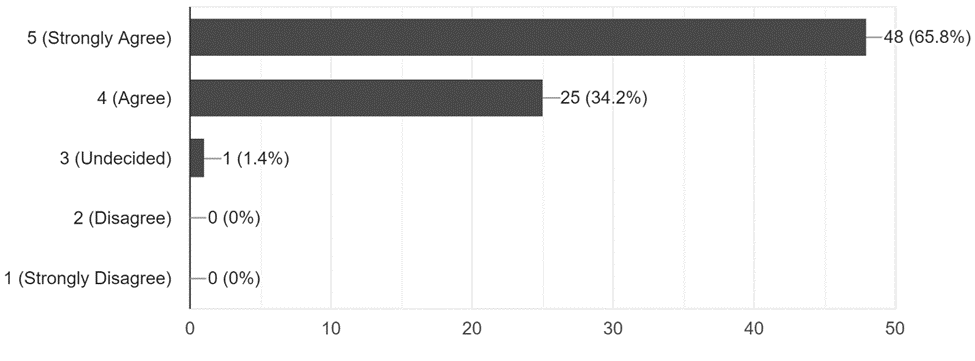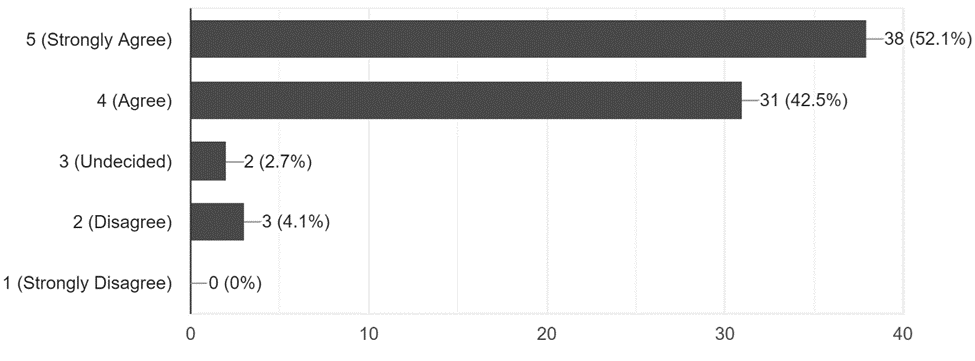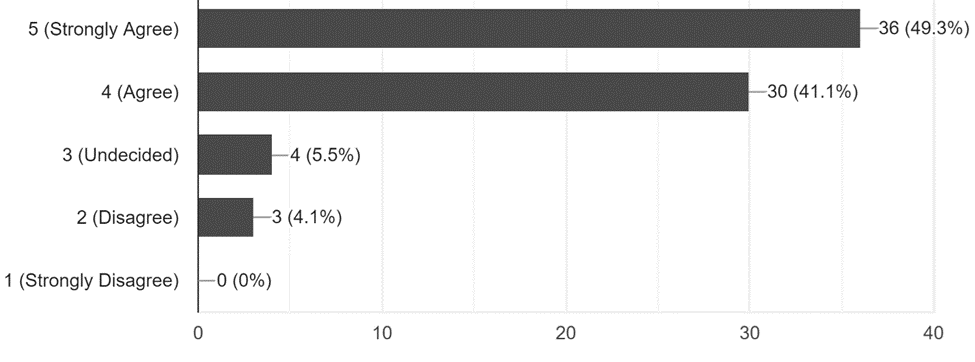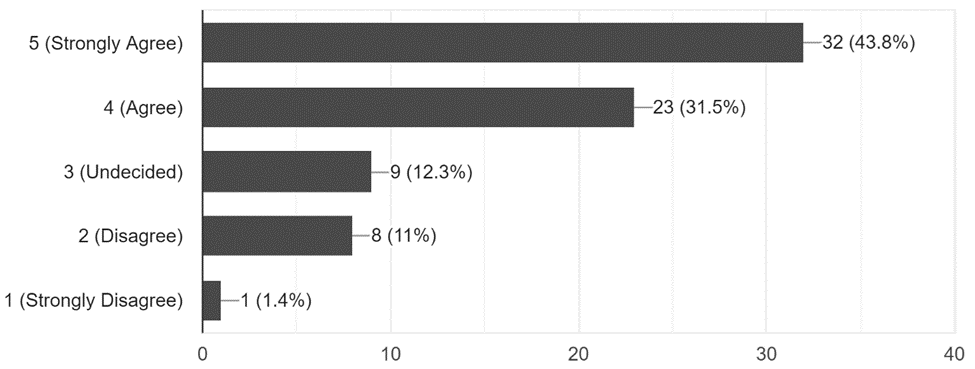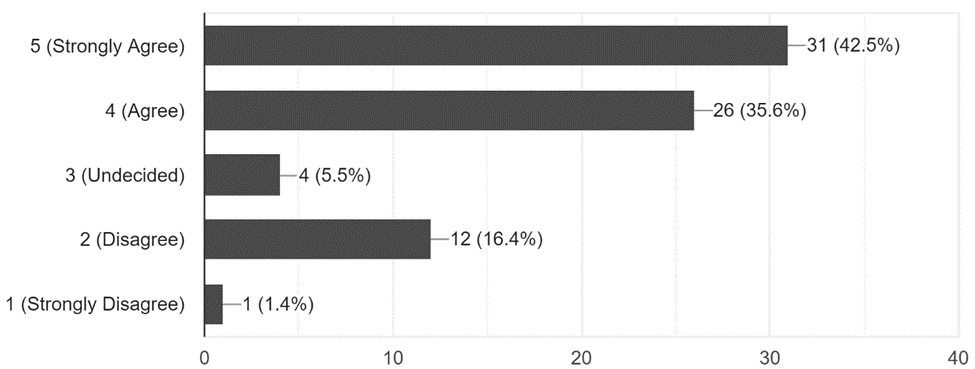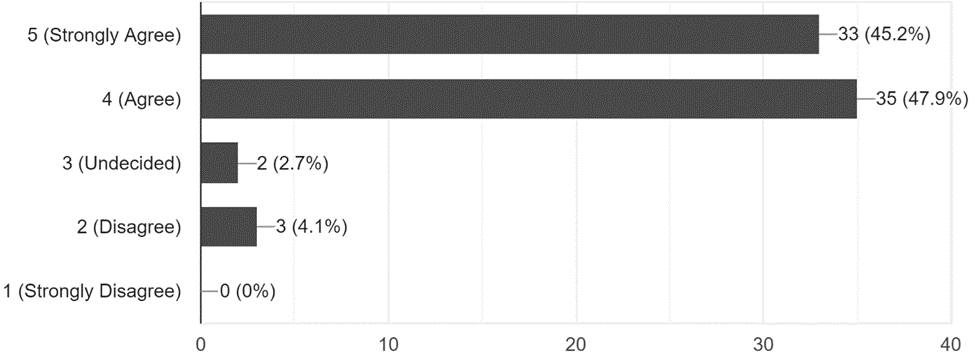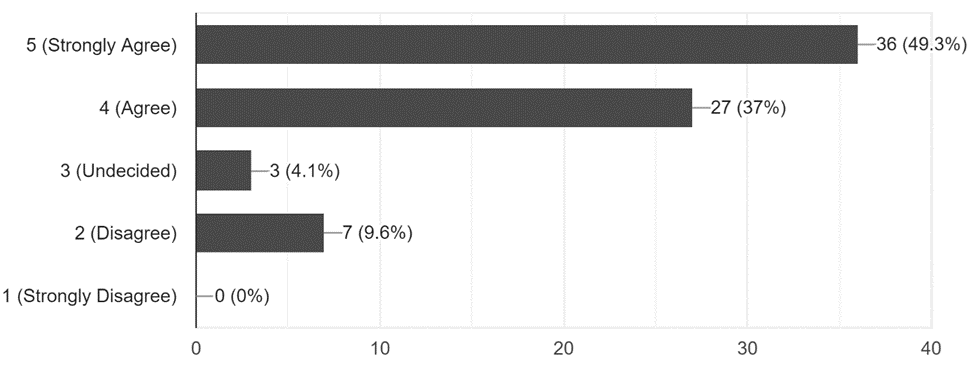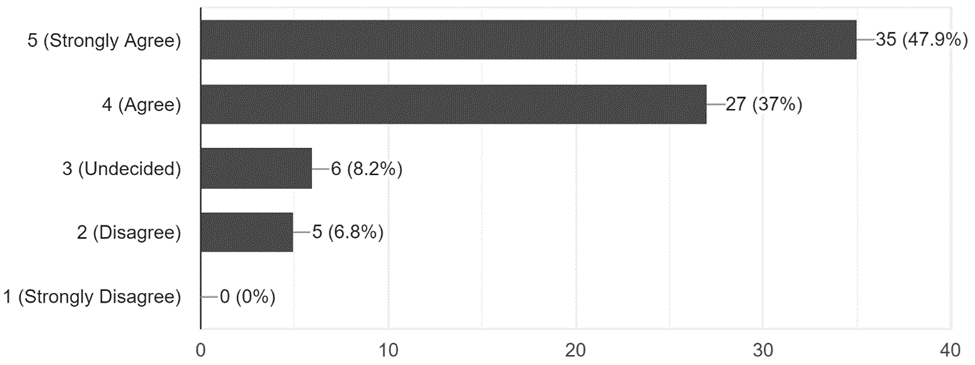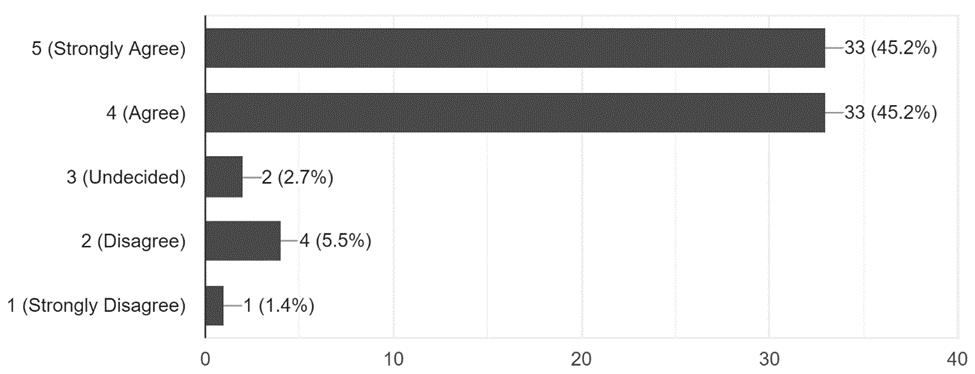Leadership Content Knowledge and Instructional Leadership in Selected International Schools in Mandalay, Myanmar: Analyzing Teacher’s Perception
- Rhia Monica Nolasco
- Heildenberg Dimarucot
- 147-180
- May 28, 2024
- Education
Leadership Content Knowledge and Instructional Leadership in Selected International Schools in Mandalay, Myanmar: Analyzing Teacher’s Perception
Rhia Monica Nolasco*, MAED, Heildenberg Dimarucot, DEM
FEU Institute of Education Graduate Studies and Transnational Education
*Corresponding Author
DOI: https://dx.doi.org/10.47772/IJRISS.2024.805013
Received: 20 April 2024; Revised: 26 April 2024; Accepted: 30 April 2024; Published: 28 May 2024
ABSTRACT
Leadership content knowledge refers to principals’ understandings about the content of school subjects (Stein and Nelson, 2003). In Instructional Leadership, a principal collaborates with teachers to promote and guide the development of best practices in the classroom. When the principal and the teacher specialize in different fields, the principal may struggle to offer relevant feedback conducive to teacher growth and influence learning outcomes. This research endeavored to analyze teachers’ perception of leadership content knowledge of the various aspects of instructional leadership. Respondents provided ratings on leadership content knowledge in enhancing learners’ academic, fostering teacher growth, and positively contributing to instructional strategies. It also measured the perception of teachers of the school principals’ content knowledge, creating a comprehensive picture of the constructive role of leadership content knowledge in the overall educational experience. Conversely, the Likert-scale questions in other parts were structured to gauge the negative results on academic success associated with lack of leadership content knowledge. Teachers rated the negative impact posed by the lack of content knowledge in terms of effective instructional strategies, learners’ academic development, and continuous improvement of instructional practices. The section delved into teachers’ perceptions in the absence of content knowledge and its adaptability to educational advancements, school’s overall academic success, and instructional leadership. Convenience sampling was employed, where the researcher could collect data from a conveniently available pool of respondents. The researcher used convenience sampling due to practical requirements, like being in the same location, being available at a specific time, being easily accessible, or being willing to volunteer. The researcher used a self-made closed-ended survey validated by the expert, with 20 questions featuring Likert-scale. The survey questionnaire was administered electronically, fostering ease of participation.
Keywords: leadership content knowledge, instructional leadership, instructional leaders, perception, school leaders, school principal, perspective, facilitates, hinders, teacher growth
INTRODUCTION
Principals create an environment in which educators feel empowered, supported, and appreciated by their institutions by supporting professional development, promoting peer collaboration, and providing insightful evaluations that have an impact on academic outcomes, student performance, achievement and success. According to Stein and Nelson, 2003, Leadership content knowledge refers to leaders’ understandings about the content of school subjects. We define leadership content knowledge as that knowledge of subjects and how students learn them that is used by leaders when they function as instructional leaders. Instructional leadership is a primary task of school leaders, but this work may be complicated when leaders and teachers do not share content area or grade level expertise. In instructional leadership the principals perform a vital role in determining students’ effective learning (Heck, 1992) to improve the classroom directions and instructions (Whitaker, 1997). The more extensive perspective represented those principals where the quality of teaching and learning was strong and were considered as effective factors and demonstrated instructional leadership both directly and indirectly (Murphy, 1988). Leadership content knowledge (LCK) acknowledges that school leaders cannot know everything about teaching in the content areas, but suggests leaders can work to bridge this divide (Fuentes and Jimmerson, 2020). The kind of knowledge that will equip Principals (and other academic leaders) to be strong instructional leaders we will call leadership content knowledge. Standing at the intersection of subject matter knowledge and the practices that define leadership, this form of knowledge would be the special province of principals and others charged with the improvement of teaching and learning. the work of instructional leadership is complicated by limitations of knowledge and skills. Engaging with teachers in dialogue around issues of pedagogy; wrestling with what is being taught, when, and how; and excavating assumptions around how learning is measured are at the core of what it means to be an instructional leader (Brazer & Bauer, 2013; Louis, Leithwood et al., 2010; May & Supovitz, 2011). Facilitating instructionally-focused conversations, then, requires not only a bit of coaching skills (Carraway & Young, 2015; Desimone & Pak, 2017; Knight, 2009; Neumerski, 2012) but also familiarity with instructional strategies that are applicable across multiple content areas and grade levels (e.g., Hattie, 2012; Marzano, 2009; Marzano et al., 2011). It is essential in seeding and strengthening instructional leadership efforts: leadership content knowledge (LCK). Without a baseline understanding of what good practice looks and sounds like in a particular content area and/or grade level, school leaders may fail to notice the presence or magnitude of instructional problems or be ill-equipped to support the continued development of exemplary teachers.
In Steel et al paper, 2015 (Improving Instructional Leadership Through the Development of Leadership Content Knowledge: The Case of Principal Learning in Algebra) they examined the impact of professional development focused on developing leadership content knowledge in algebra. Instructional leadership is integral to improving mathematics teaching in secondary schools. However, administrators often lack sufficient content knowledge in mathematics to be effective in this role. In Boston et al paper, 2017, they present a framework for considering principals’ knowledge and actions to support high-quality instruction in a specific content area (mathematics). Using design research, they engaged principals in professional development and assessed principals’ ability to identify aspects of high-quality mathematical tasks and instruction through pre–post task sort analyses and classroom video analyses. Significant differences occurred in principals’ identification of high-quality mathematics tasks and instruction, students’ thinking, and teachers’ actions. Subsequent data identified changes in principals’ feedback to mathematics teachers; To support principals to acquire the knowledge and actions to serve as instructional leaders in specific content areas, they conjecture that co-developing with principals a content-specific classroom observation form consistent with ideas in the PD is a necessary condition for sustained impact. They suggested engaging with district leaders to promote the use and training of the observation form over an extended time period. In this way, principals’ knowledge and actions for identifying, communicating, and pressing for high-quality tasks and instruction explored in the PD would be aligned with their daily work and valued by the district.
Background of the Study
According to Liisa Brolund (2016) in her “Student Success Through Instructional Leadership”, Instructional leadership is a model of school leadership in which a principal works alongside teachers to provide support and guidance in establishing best practices in teaching. Principals employing this model of leadership communicate with their staff and together set clear goals related to student achievement. In this model, teachers are supported by the principal. The principal provides coaching and mentoring to those teachers who require it, as well as professional development opportunities that allow teachers to explore best practices in teaching. The goal of instructional leadership is for the principal to work closely with teachers in order to increase student achievement. Despite evidence that practicing instructional leadership in schools has a positive effect on student achievement, many principals perceive roadblocks to becoming effective instructional leaders. Principals have reported that they have little time to focus on instructional tasks, they are uncomfortable visiting teachers’ classrooms, and they do not have the knowledge or capacity to guide teachers’ practice (Carraway & Young, 2014; Salo et al., 2014). In Joan Blasé paper, she suggested that talking with teachers to promote reflection and promoting professional growth are the two major dimensions of effective instructional leadership, as reported by teachers. Overall, their data indicate that each of the instructional leadership strategies described above have strong “enhancing effects” on teachers, emotionally, cognitively, and behaviorally. They also noted that principals who are defined as effective instructional leaders by teachers tend to use a wide range of the strategies described in this article. These strategies were used frequently and seemed to enhance one another. Moreover, principals’ leadership reflected a firm belief in teacher choice and discretion, nonthreatening and growth-oriented interaction, and sincere and authentic interest. (Blase, Joseph & Blase, Jo.,2000).
Stein and Nelson develop their Leadership Content Knowledge proposition around the instructional core – what happens in classrooms as teacher, students, and content materials (curriculum, lesson design, instructional materials, etc.) interact. It is easy to recognize that teachers are leaders in their classrooms, and they must orchestrate what happens in their classroom so that all students have opportunities to learn challenging and relevant material. Teachers design learning activities and interactions to make that happen. However, we know that the level of ambitious teaching and learning is bounded by teachers’ content knowledge and skills, by their general instructional skills, and by their knowledge about how to teach the particular content, what we have come to call pedagogical content knowledge (Schulman, 1986). The first responsibility of curriculum, instruction, and assessment is directly involved in the design and implementation of curriculum, instruction, and assessment practices. The second responsibility of knowledge of curriculum, instruction, and assessment is knowledge about current curriculum, instruction, and assessment practices. Both responsibilities are influenced by a school leader’s knowledge in specific content areas. Carver, Cynthia L., 2012, described in her module performance assessment designed to equip prospective principals with the knowledge and skill needed to evaluate curriculum, observe and assess instruction, interact meaningfully with teachers about instructional decision-making, and design professional learning opportunities that enhance student learning outcomes. This project is conceptually grounded by Stein & Nelson’s (2003) construct of “leadership content knowledge,” which argues that effective leadership for instruction demands complex understandings of subject matter, how children learn that subject matter, and how teachers learn to teach that subject matter. She added, the traditional approach to prepare future instructional leaders has been to focus on the organizational conditions that support high quality teaching and learning e.g. promoting high expectations for student learning., facilitating a positive school climate that supports teachers learning from and with one another, and decentralizing decision-making for instruction (Stein and Spillane, 2005). As important as these leadership practices are, however, this focus can serve to distance prospective leaders from the real work of the classroom. As instructional leaders, principals also need to know how to observe and assess instruction, how to identify needed instructional supports for struggling students and how to give feedback to teachers, how to evaluate curriculum materials, how to design and lead effective professional learning, and how to engage in meaningful and sustained conversation with teachers. Naturally, at the point of the classroom, these leadership practices are always situated in a subject matter. As Stein and Nelson (2003) explain, leadership content knowledge sharpens the lens by which we look at the leadership for teaching and learning. In Nedim Özdemir (2020) study, he focused on the impact of principals’ leadership content knowledge, evaluation practices and teachers’ professional learning activities on classroom instruction. Data were collected from 425 teachers who worked in 46 elementary and lower secondary public schools within two provinces in Turkey. Teachers were asked to fill out a questionnaire on principals’ leadership content knowledge, evaluation feedback, professional learning activities and changed instructional practices. The study employed multilevel structural equation modeling (MSEM) by using the Bayesian estimation method to analyze the research hypotheses. Findings indicated that if teachers perceive the evaluation progress as more useful, then they will participate in more professional learning activities, and they will be more effective in their classroom practices. The study also indicated that teachers’ professional learning activities stimulate their instructional practices. The study underlined the critical role of leadership content knowledge in evaluating practices and providing useful feedback perceived by teachers in elementary and secondary schools. Principals should lead to instruction by knowing how to address a lack of teachers’ pedagogical content knowledge and classroom practices. He added that The Ministry of Education should support principals in becoming effective instructional leaders to observe teachers and provide them meaningful feedback on teaching.
Instructional Leadership and the Principal
Leadership that promotes the advancement of teaching and learning is known as instructional leadership. Pedagogical leadership, learning-centered leadership, leadership for learning, and student-centered leadership are some of the terms used to describe it. According to Hallinger (2005) and Murphy et al., (2016), instructional leadership entails putting more of an emphasis on classroom practice than on administrative duties and on interacting with teachers in ways that encourage and support better teaching. In addition to encouraging reflective practice and supporting ongoing professional development, this work with teachers involves giving input on curriculum alignment, planning, instruction, and assessment (e.g., Glickman et al., 2014; Mette et al., 2015). It has been shown that school leaders’ efforts to improve instruction have an impact on students’ learning (Louis, Leithwood et al., 2010; Marzano et al., 2005, for example). Haim Shaked paper (January 2, 2023) emphasized previous studies. Principals need to be involved in both organizational management and instructional leadership, but they did not elaborate on how one supports the other. In order to close this vacuum in the body of research-based knowledge, he investigated how organizational management affects instructional leadership. According to his research, there are four primary facets of instructional leadership that are supported by the eight functions of organizational management. These are: (1) creating a good learning environment; (2) raising the caliber of instruction; (3) achieving the school’s instructional vision; and (4) providing opportunities for instructional leadership. Instructional leadership is leadership that supports the development of teaching and learning. It is referred to using different names including pedagogical leadership, learning-centered leadership, leadership for learning, and student-centered leadership. (Thien, Darmawan, and Adams, 2023) The study at the school level, there was a significant direct correlation between teacher dedication and instructional leadership. In a similar vein, there is a notable direct impact of instructional leadership on the collective efficacy of teachers. Teacher commitment is significantly impacted directly by collective teacher efficacy as well. In an educational setting, leadership is crucial since it aids in the management of daily operations. Higher education has always benefited greatly from instructional leadership since its primary function has always been to influence efficient teaching and learning procedures (Munna, 2023). In Munna’s (2023) Instructional Leadership and Role of Module Leaders, he used his own institution as a case study, describe the function of instructional leadership and the connection between it and the role of module leaders in higher education. Two program directors were chosen from the School of Business and Health and Social Care. According to research, program/module leaders can create a common understanding of learning and raise student accomplishment by implementing instructional leadership. As per Nixon’s (2015) assertion, the term “instructional leadership” has gained a lot of traction in recent years, leading people to assume certain things about it. “Instructional leadership is not a static term,” the speaker continues. Its meaning is not universally understood. “Instructional leaders in small schools will inevitably be highly hands-on, whereas in larger schools they will concentrate on developing the leadership capacity of other staff,” the speaker goes on to say. “Because anyone who influences learning outcomes is an instructional leader,” even so, “there is also a place for instructional leadership outside the school setting.” 20 public-school administrators in the western United States acting in an instructional leadership role in one suburban K-12 school district responded to two research questions: How do public-school administrators acting in an instructional leadership role describe instructional leadership self-efficacy and how do public-school administrators acting in an instructional leadership role describe the influence of their instructional leadership self-efficacy on their work engagement? The study’s findings identified 20 themes that helped to clarify how school administrators express their confidence in their capacity to develop and maintain connections, offer instructional assistance, and get ready for instructional leadership. The findings indicated that public school administrators think their work engagement to enhance school results is influenced by their instructional leadership self-efficacy (Hanks, Stephanie Anne, 2023).
Leadership Content Knowledge and the Principal
A principal’s job is not to be everyone’s content-expertise developer and instructional coach. The principal’s job is to make sure that content-expertise development and support are provided to everyone. Leadership circles continue to argue the extent to which principals should be knowledgeable about the courses taught in their school and how much it matters. The adage “good teaching is good teaching” has been bandied around a lot, as has the idea that principals should be well-versed in successful teaching techniques that cut across subject matter and grade level. Susan Korach, an associate professor of education leadership at Morgridge College of Education at the University of Denver, advised principals to be aware of the academic requirements for each grade level in their school as well as to have a working knowledge of the curriculum and instructional resources. However, she added, it’s equally critical to understand how to assess and gather proof that pupils are learning. Studies indicate that student learning is positively impacted by instructional leadership. For example, Hattie (2009) found that instructional leadership—as opposed to transformational leadership, management, etc.—was the most effective approach to lead a school because it helps focus on learning. This finding was made in his synthesis of meta-analysis (2009–2012), which included over 420 studies on school leadership. This conclusion, which Hattie arrived at after synthesizing over 420 papers on leadership, is not unique to him among researchers. Even though it is commonly known that the quality of instruction students receive in their classrooms is what matters most for their learning, principals can have an indirect impact on what happens in the classroom through other initiatives like fostering a positive school climate, increasing professional capacity, or working with teachers (Bryk, Sebring, Allensworth, Luppescu, & Easton 2010; Marzano, Waters, & McNulty, B. 2005; 106 Sebastian & Allensworth 2012). The analysis’s findings (Collingwood, Charles Derek, 2020) demonstrated that high school administrators who carry out certain leadership initiatives aimed at promoting scientific and math literacy benefit their students’ academic progress in these subjects. In addition, instructional leaders with backgrounds in science and math execute these strategies more frequently than leaders without such skills. These findings are consistent with other studies by (Lochmiller, 2016; Stein & Nelson, 2003). According to the study’s theoretical framework, instructional leadership doesn’t happen in a vacuum. According to Boston et al., 109 (2016) and Stein & Nelson (2013), it is predicated on the instructional leader’s prior pedagogical content understanding, subject matter expertise, and leadership training. As a result, the foundation of instructional leadership is the leader’s subject matter expertise. Consequently, leaders have an innate tendency to advocate for leadership initiatives and programs that correspond with their domain of competence or acquaintance. Student achievement indicates that leaders’ familiarity with curriculum, assessment, and instruction is a strong indicator of how well students will perform (Waters, T., Marzano, R. J., & McNulty, B. 111 2003). “Leadership content knowledge” is the subject matter expertise that administrators employ to guide instruction, according to Stein and Nelson (2003). School principals need to possess leadership content knowledge, which includes understanding the subject matter itself, understanding how kids learn it best, and understanding how teachers acquire it. With this knowledge, principals are prepared to take on the role of instructional leaders, able to evaluate and witness successful instruction as well as engage in meaningful, deep interactions with teachers. It is your duty as an educational leader to make sure that the teaching and learning program in your building is of the highest caliber. This calls for leadership content expertise (Stein & Nelson, 2003), which entails having a thorough understanding of a subject as well as opposing viewpoints of the best ways to teach it. Understanding the organizational structures and procedures that promote teacher learning in support of student learning is also necessary for this. With this understanding, however, you are in a good position to direct the development, execution, supervision, and assessment of a robust curriculum that results in high levels of student learning. Stein and Nelson agree that it is unrealistic to expect school administrators to be experts in every subject.
Nonetheless, they ought to be extremely knowledgeable about at least one subject, including common modes of inquiry within that field, concepts and ideas that students are likely to find challenging (such as common misconceptions), acknowledged evidence-based teaching strategies, and curriculum elements that promote in-depth learning in that subject. Once they have this basis, leaders can go on to learn more topics as needed. “In-depth exploration of an important but bounded slice of the subject, how it is learned, and how it is taught” is what Stein and Nelson (2003) refer to as “post-holding” (p. 423).
Curriculum and the Principal
According to Van Deventer and Kruger (2003), school administrators are expected to facilitate and carry out curriculum changes that are mandated by education authorities in their capacity as internal change agents. According to Huber and West (2002), a principal is frequently mentioned as the crucial figure in school development since they oversee the processes of curriculum growth and renewal, function as change agents, and either support or oppose curriculum changes. Principals are under tremendous pressure to assume a more instructional leadership role rather than a management one as fast curriculum change finds its way into schools (Smith, Mestry & Bambie, 2013). The South African education authorities have changed the curriculum four times in the last twenty-four years, which has had a detrimental effect on student performance and educational standards in many schools (Mandukwini, 2016). We looked at the principals’ responsibilities as instructional leaders in overseeing curriculum modifications in this study. The principals’ poor management of curricular modifications is one of the primary causes of the low student performance. The intricate and diverse responsibilities of school administrators, including handling finances, attending to a multitude of administrative issues, and disciplining students, prevented them from dedicating their time to developing curricula, introducing educators to innovative pedagogies, or efficiently overseeing student evaluations (Vanitha Govindasamy et al, 2022). A school principal must be educated about curriculum, instruction, and assessment methods from both the past and the present in order to lead curriculum effectively (Glasper, 2018). The statement that “strong, intentional leadership in curriculum development is a necessity for strong instructional leadership” (p. 188) was also covered by Glatthorn and Jailall (2009). A school principal should also do the following daily actions to be an effective curriculum leader: having open discussions with parents and staff; scheduling time for classroom observations; and learning from other school leaders (Adkins-Sharif, 2019). The Wallace Foundation (2013) expanded on the five essential duties that a school principal must fulfill in order to fulfill the job of curriculum leader: 1) Developing a vision of academic success for every student; 2) fostering an environment that is conducive to learning; 3) fostering leadership in others; 4) enhancing instruction; and 5) overseeing personnel, information, and procedures. “Using the appropriate methods to bring the written, taught, supported, and tested curriculums into closer alignment, so that the learned curriculum is maximized” is one of the duties of curriculum leadership, according to Glatthorn (1987) (p. 4). Cole-Foppe (2016) investigated how teachers viewed principals as leaders of the curriculum. The study’s conclusions showed that instructors thought principals had not given enough thought to curriculum-related issues in schools. In their capacity as curriculum leaders, the study’s school administrators agreed that they could have done more. Cardno (2003) found that heavy administrative burdens and pressures from outside agencies work against principals’ ability to manage curricula. The centralized government system hindered school principals’ ability to lead curricula, according to Alsaleh’s 2019 report. Nonetheless, despite having some training, Kleidon (2018) and Ng et al. (2015) discovered that principals believed they were ill-prepared to carry out their responsibilities as curriculum and instructional leaders. Principals in Naidoo and Petersen’s (2015) study mostly believed that their jobs as school principals were exclusively managerial in nature. School principals were only marginally involved in instructional leadership activities, according to the findings of Sasson’s (2016) study. School principals had little direct involvement in curriculum leadership, according to Shaked’s (2019) assessment. In Tak Chan et al (2022) study, it demonstrated that when creating the curriculum, principals of elementary, middle, and high schools give careful consideration to the needs of each individual student. They understand that they must adhere to the school’s and the state’s core curriculum. District guidelines for implementing the program. The principals are aware that there are opportunities for ongoing curriculum development through assessment, nevertheless. The study’s principals have indicated the ways in which they collaborate with their teachers to develop and implement curricula.
Few principals of schools work as full-time instructional leaders. Rather, they are frequently expected to carry out administrative duties like speaking with parents, overseeing the school’s administration, and going to meetings (Fink & Resnick, 2001). While these are important tasks, they divert time away from instructional leadership, which has been shown by a number of researchers to be effective in raising student achievement (Brazer & Bauer, 2013; Edmonds, 1979; Fink & Resnick, 2001; Gillat & Sulzer-Azaroff, 1994; Grissom & Loeb, 2011; Kafka, 2009; Marks & Printy, 2003; Murphy, 1988; Provost et al., 2010; Sebastian & Allensworth, 2012). In Lena Glaés-Coutts (2023) paper, written answers from the principals revealed a multilayered understanding of the SAEC program. It reflected various facets of instruction as well as program structure. There is a significant difference in their answers regarding the definition of teaching and how it is implemented in the SAEC program. While some participants answered the question with no information at all or said they did not know, others said they were unaware of the program’s specifics or even the function of the teachers in SAEC. In Chabalala, G. & Naidoo, P., (2021) study, it highlighted the importance of teachers and middle managers in understanding that principals are merely not school managers or administrators, but rather instructional leaders whose primary role is to direct teaching and learning processes in schools. Principals need to create time within their constricted schedules to become instructional leaders, which is their main purpose in schools.
Teacher’s Professional Growth and Development and the Principal
The most important responsibility of every educator is to provide the conditions under which people’s learning curves go off the chart. Whether one is called a principal, a teacher, a professor, a foundation official, or a parent, our most vital work is promoting human learning … and above all our own learning. (Barth, 1996, p. 56)
There is growing agreement among researchers, practitioners, and educational policy makers that, as we approach the next millennium, teacher professional development will play a critical role in educational reform. To say that teacher professional development is vital to school improvement aimed at improving student learning outcomes would really appear cliched. The principal of a school has a special ability to shape how these guiding principles are used and how well teacher professional development is carried out as a whole. Creating and maintaining a happy and healthy teaching and learning environment for all students, including the professional staff, is one of the principal’s essential responsibilities (Paul V. Bredeson 2000).
“When a principal sneezes the entire school catches a cold.”
–TODD WHITAKER
Principals set the tone of the school. Principals can assist teachers by providing them with chances for meaningful professional development that are tailored to their needs, issues, and interests. This includes planning conferences, workshops, and in-service training sessions on relevant topics such instructional strategies, classroom management, and educational technology. School administrators provide teachers with the resources they need to stay current with best practices, expand their knowledge base, and eventually improve their performance in the classroom by sponsoring professional development. According to Karacabey (2021) study, 4,729 teachers working in Sanliurfa province in Turkey were analyzed. The findings indicated that just 25.5% of principals provided adequate support for teachers’ professional development, and that school principals only infrequently encouraged teachers’ professional growth. In order to promote teachers’ professional development and keep them informed about innovations in education, school principals mostly used pertinent resources. Furthermore, it was observed that school principals were deficient in carrying out tasks that could facilitate the professional development of teachers. These tasks included formulating programs for both individual and group development, setting up a professional development monitoring form for educators, planning educational events outside of the seminar period, getting sufficient assistance from subject matter experts, and assigning sufficient individual reading and research assignments. In their paper (Anne Hilton et al, 2015), almost 70 teachers from 18 schools took part in an ongoing professional development program. Twenty leaders from eleven schools accepted the invitation to join their teachers in the professional development program, which was open to principals and other school administrators. Using questionnaires, interviews, and workshop discussions, data were gathered from participating school leaders and teachers throughout the project to look at their professional development. The results demonstrated that school administrators’ involvement in professional development programs for teachers positively impacts instructors’ ability to apply and consider new information and techniques. They also demonstrated a favorable impact on the leaders’ own career advancement.
Turkey has a notably lower rate of teacher participation in professional development activities. In this context, the study uses a nationally representative data set from the Teaching and Learning International Survey (TALIS) and employs a multi-level statistical analysis with Hierarchical Linear Modeling (HLM) to explore the various teacher- and school-level factors associated with teachers’ participation in professional development activities in Turkey. The study’s findings indicate that a number of criteria at the teacher and school levels are highly correlated with the degree to which Turkish teachers participate in professional development activities. In particular, the important role that school principals play in the professional development of teachers is examined. Thus, it is recommended that principals of schools receive training regarding the significance of teacher in-service professional development opportunities (Gumus, S. 2013). The topic of teachers’ professional development has grown in importance within the education sector. The professional development of teachers is significantly influenced by the role and contribution of the school principal-leader. The establishment and success of a learning community depend on the leadership of school administrators, which is a critical component of teachers’ professional development (Bredeson, 2000). As “agents of change” in their school units, principals must oversee change initiatives (Romay et al., 2016). In Miltiadis Chalikias et al (2020) study, it showed a statistically significant relationship between the professional growth of teachers and the leadership role of the school principal. The study’s findings also demonstrate how administrators’ professional development directly affects teachers’ growth as professionals. Teachers’ leadership development is thought to benefit greatly from the leadership practices of principals (Szeto & Cheng, 2018). The outcomes demonstrated how these factors impact instructors’ professional growth. The school principal’s expertise and experience in the field play a significant influence in the leadership role that teachers play in their professional development. The study also found a strong link between leadership style and professional development. The leadership a school principal provides for the professional development of teachers has a significant impact on the role. Lastly, the function of the school principal, who should have qualities like accountability, communication, and impartiality while keeping lines of communication open with instructors, is linked to the professional development of teachers.
Statement of the Problem
Leadership Content Knowledge and Instructional Leadership are connected with promoting teacher growth, improving the teacher’s instructional techniques, resulting in high quality teaching, assessment and high-quality instruction, improving learning outcomes and impact on academic performance, achievement and success. Few studies have looked at the part Leadership Content Knowledge plays in school principals’ attempts to act as instructional leaders. We don’t know much about how teachers perceive school principals’ Leadership Content Knowledge or how instructional leadership initiatives depend on or reflect Leadership Content Knowledge. Thus, the goal of this study was to analyze how teachers perceive the presence and absence of Leadership Content Knowledge (LCK) and Instructional Leadership in selected of international schools in Mandalay, Myanmar. Specifically, this study sought to answer the following questions:
1. What is the profile of the local and foreign teachers in selected international schools in Mandalay, Myanmar in terms of
1.1 age;
1.2 gender;
1.3 educational attainment;
1.4 subjects currently teaching
1.5 Year level/ grade level currently teaching
2. How do teachers perceive the presence of leadership content knowledge and instructional leadership of a school principal in terms of:
2.1 learner’s academic development
2.2 teacher’s growth and development
3. How do teachers perceive the absence of leadership content knowledge and instructional leadership of a school principal in terms of:
3.1 learner’s academic development
3.2 teacher’s growth and development
Scope and Delimitations of the Study
Participants of this study were local and foreign teachers teaching in selected international schools in Mandalay, Myanmar. The study focused on analyzing the teacher’s perception of the presence and absence of Leadership Content Knowledge (LCK) and Instructional Leadership. Local and foreign teachers were conveniently selected. To collect data, the researcher used respondents who were “convenient” to the researcher with varying cultural backgrounds and educational experiences. The researcher acknowledged that convenience sampling may lead to sampling bias because the sample may not accurately represent the target population (Nikolopoulou, K. 2023). Thus, has impact on the generalizability of the findings.
METHODOLOGY
Through convenience sampling, 73 foreign teachers teaching in selected international schools in Mandalay, Myanmar volunteered to be the respondents of this study.
Respondents
Forty-four (44) respondents fall between the age of 25 – 34, 16 respondents were between 35 – 44, and 13 respondents were between 45 – 54. The respondents’ ages ranged between 25 to 54 with a mean age of 35.25. There were fourteen (14) male respondents while fifty-nine (59) were female. With respect to academic backgrounds, 47 respondents had bachelor’s degree, 20 respondents had Master’s degree, 5 respondents have completed/ has an on-going PHD, and 1 respondent had diploma in teaching. Some of the respondents are teaching more than 1 subject. 36 respondents are teaching English, 23 respondents are teaching Maths, 24 respondents are teaching Science, 8 respondents are teaching Physical Education, 2 respondents are teaching Burmese, 1 respondent is teaching Chemistry, 2 respondents are teaching Physics, 2 respondents are teaching Biology, 2 respondents are teaching Geography, 4 respondents are teaching History, 1 respondent is teaching Economics, 22 respondents are teaching Arts. On the other hand, some respondents are teaching more than 1 class level. 5 respondents are teaching the Reception class, 8 respondents are teaching in Kindergarten 1, 9 respondents are teaching in Kindergarten 2, 4 respondents are teaching in Year 1, 17 respondents are teaching in Year 2/ Grade 1, 15 respondents are teaching in Year 3/ Grade 2, 19 respondents are teaching in Year 4/ Grade 3, 14 respondents are teaching in Year 5/ Grade 4, 19 respondents are teaching in Year 6/ Grade 5, 9 respondents are teaching in Year 7/ Grade 6, 10 respondents are teaching in Year 8/ Grade 7, 8 respondents are teaching in Year 9/ Grade 8, 7 respondents are teaching in Year 10, Grade 9, 7 respondents are teaching in Year 11/ Grade 10, 4 respondents are teaching in Year 12/ Grade 11, 3 respondents are teaching in Grade 12, 1 respondent is teaching as HRT, 1 respondent is teaching as Relieving teacher.
Research Design
In this paper, the researcher used descriptive quantitative analysis approach It helped the researcher’s understanding of the primary characteristics and trends in the data as well as their ability to compare various groups or variables within the data using tools like frequency tables and bar charts. Descriptive statistics was used to summarize and describe the main features of a dataset, such as its frequency, mode, mean and standard deviation. This method provided an overview of the data and helped identify patterns and relationships. Descriptive statistics was reported numerically in the manuscript text and/or in tables, or graphically in its figures and in narrative description of the results.
Research Locale
The study was conducted in selected international schools in Mandalay, Myanmar, a suitable location due to the prevalence of international schools and international schools’ accommodation for their foreign teachers in close proximity to the researcher. These schools attracted diverse foreign teachers from various countries and local teachers in Mandalay, making them an ideal focus for the study.
Sampling Design
Convenience sampling of local and foreign teachers in selected international schools in Mandalay was employed to strategically align with the research objectives, focusing on leadership content knowledge and instructional leadership of principals. Participants were selected for inclusion in the sample due to convenience, varying cultural backgrounds and educational experiences, capturing a rich array of perspectives. This approach enhanced the depth and specificity of insights of leadership content knowledge and the instructional leadership practices of principals. The diverse participant pool contributed to a comprehensive understanding of the complex interplay between leadership content knowledge and effective instructional leadership within the unique context of selected international schools in Mandalay, Myanmar.
Instrument
The researcher used a self-made close-ended survey with 20 questions validated by the expert, featuring Likert-scale. The questionnaire was a survey instrument comprised of a set of questions to ask the participants in the survey. Surveys are an efficient way to collect data from a large and diverse population, allowing researchers to generalize their findings to broader contexts (Dillman et al., 2009). Surveys are often a cost-effective method for data collection, particularly when compared to other research methods such as experiments or interviews (Fowler, 2013). The survey questionnaire was administered electronically, fostering ease of participation. In this study, Likert scale was used to rate the significance of leadership content knowledge in enhancing learners’ academic development, fostering teacher growth, and positively contributing to instructional strategies. It also measured the perception of teachers on school principal’s content knowledge, creating a comprehensive picture of the constructive role leadership content knowledge in the overall educational experience. Conversely, the Likert-scale questions in other parts were structured to gauge the negative results on the academic success associated with lack of leadership content knowledge. Teachers rated the negative impact posed by the lack of content knowledge in terms of effective instructional strategies, learners’ academic development, and continuous improvement of instructional practices. The close-ended survey is divided into three sections, Section 1: Demographics, Section 2: Leadership Content Knowledge Facilitating Instructional Leadership, Section 3: Absence of Leadership Content Knowledge Hindering Instructional Leadership.
Section 1: Demographics
What is the profile of the local and foreign teachers in selected international schools in Mandalay, Myanmar in terms of:
1.1 age
1.2 gender
1.3 educational attainment
1.4 subjects currently teaching
1.5 Year level/ grade level currently teaching
Scale: 1 (Strongly Disagree), 2 (Disagree), 3 (Undecided), 4 (Agree), 5 (Strongly Agree)
Section 2: Teacher’s Perception on the Presence of Leadership Content Knowledge and Instructional Leadership of a School Principal
1.1 The leadership content knowledge of a school leader significantly enhances learners’ academic development.
1.2 The leadership content knowledge of a school leader plays a crucial role in fostering teacher’s growth and development.
1.3 The instructional strategies influenced by the leadership content knowledge positively contribute to the academic success of students.
1.4 Teachers believe that a school leader’s content knowledge is directly linked to the improvement of learners’ academic performance.
1.5 The leadership content knowledge of a school leader is instrumental in creating a positive impact on the academic development of students.
1.6 Teachers observe a direct correlation between the principal’s content knowledge and the academic achievements of learners.
1.7 The principal’s content knowledge effectively supports the professional growth and development of teachers.
1.8 Teachers feel that the leadership content knowledge promotes a conducive environment for ongoing professional development.
1.9 The instructional leadership influenced by the principal’s content knowledge contributes significantly to the continuous growth of educators.
1.10 Teachers believe that leadership content knowledge positively influences the overall educational experience for both students and teachers.
Section 3: Teacher’s Perception on the Absence of Leadership Content Knowledge and Instructional Leadership of a School Principal
2.1 The absence of leadership content knowledge in a principal hinders the effective implementation of instructional strategies.
2.2 Teachers perceive a significant negative impact on learners’ academic development when the principal lacks content knowledge.
2.3 The absence of leadership content knowledge is a barrier to the continuous improvement of instructional practices in the school.
2.4 Teachers feel that the lack of content knowledge in the principal directly impedes their professional growth and development.
2.5 The absence of leadership content knowledge results in a less effective implementation of curriculum and educational programs.
2.6 Teachers believe that the principal’s lack of content knowledge limits the school’s ability to adapt to educational advancements.
2.7 The absence of content knowledge in the principal hinders the school’s capacity to provide a high-quality learning experience for students.
2.8 Teachers perceive a negative correlation between the principal’s lack of content knowledge and the overall academic success of the school.
2.9 The absence of leadership content knowledge negatively impacts the school’s ability to address the diverse needs of students.
2.10 Teachers believe that the lack of leadership content knowledge hampers the overall effectiveness of instructional leadership
These Likert-scale questions aim to capture teachers’ perceptions of leadership content knowledge and instructional leadership in selected international schools in Myanmar.
Data Collection
The data was collected through survey. The survey was conducted electronically with the ethical considerations of confidentiality, voluntary participation and informed consent (Creswell & Plano Clark, 2018). The researcher used a self-made close-ended survey validated by the expert, with 20 questions featuring Likert-scale. The researcher sought expertise in validating the self-made close-ended survey questions to quality for conduction. The researcher also secured the permission to conduct the survey from the local and foreign teachers by attaching the Consent Form to Take Part in the Google form before completing the survey. The willingness of each participant was also taken into consideration for the positive results of the survey. The Consent Form to Take Part stated the participants’ rights, agreeing to be involved in the study and acknowledging the protection of rights.
Data Analysis
Descriptive statistics was employed to analyze the survey data. The researcher also used jamovi, a free and open-source computer program to analyze the measures of center and variability.
Following is the statistical tool used for each problem:
1. To answer Problem 1, What is the profile of the local and foreign teachers in selected international schools in Mandalay, Myanmar in terms of:
1.1 age;
1.2 gender;
1.3 educational attainment;
1.4 subjects currently teaching;
1.5 Year level/ grade level currently teaching the frequency distribution and mean of the data gathered were determined
2. To analyze Problem 2, How do teachers perceive the presence of leadership content knowledge and instructional leadership of a school principal in terms of:
2.1 learner’s academic development,
2.2 teacher’s growth and development the frequency distribution, percentage, mode, mean and standard deviation of the data gathered were determined
3. To analyze Problem 3, How do teachers perceive the absence of leadership content knowledge and instructional leadership of a school principal in terms of:
3.1 learner’s academic development,
3.2 teacher’s growth and development the frequency distribution, percentage, mode, mean and standard deviation of the data gathered were determined
Interpretation
The study answered the extent of Leadership Content Knowledge and Instructional Leadership. It examined its presence and significance as well as the negative result and negative impact of lack of Leadership Content Knowledge in Instructional Leadership in the overall educational experience.
Ethical Considerations
This study considered the following ethics, relevant permission to conduct this research was sought from and granted by the respondents. The purpose of the study was explained to the participants and their consent for voluntary participation sought before conducting the survey. The survey was conducted electronically with the ethical considerations of confidentiality, voluntary participation and informed consent (Creswell & Plano Clark, 2018).
- Honesty and Integrity. All the data gathered and used will not extrapolate to mislead anyone that will utilize this study for future reference.
- Objectivity. This study avoids bias in any aspect, such as design, data analysis, interpretation, and peer review. The researcher will disclose any personal or financial interest that may affect the study.
- Respect for Intellectual Property. This study did not plagiarize. Proper citations of all literature and studies were observed by the researchers.
- Legality. This study did not violate any law that governs the researcher’s work.
- Confidentiality and Human Subjects Protection. The respondents of the study were given the utmost privacy of their personal information. This study did not violate but rather respect the respondent’s rights to privacy and autonomy. Currently, there are no specific laws or regulations related to data protection in Myanmar. However, the Constitution of the Republic of the Union of Myanmar 2008 (‘the Constitution’) and the Law Protecting the Privacy and Security of Citizens (Union Parliament Law 5/2017) March 8, 2017 (‘the Privacy Law’) both set-out provisions for the protection of privacy and security of communications. Furthermore, the Electronic Transactions Law (State Peace and Development Council Law 5/2004) April 30, 2004 (‘the Electronic Transactions Law’) was amended by the Amendment on Electronic Transactions Law (State Administration Council Law 7/2021) February 15, 2021 (only available in Burmese) (‘Electronics Transaction Law as amended in 2021’), which introduced the protection of personal data.
The Electronic Transactions Law
Section 27-A of the Electronics Transactions Law as amended in 2021 provided the role of a ‘Personal Data Administrator’ (‘PDA’) who is responsible for; maintaining, protecting, and managing the personal data systematically that they administered in accordance with law and by the degree of type and security; not, except the permission of the owner of personal data or under provisions of any existing law, letting the personal data that they administered be scrutinized, disclosed, informed, distributed, sent, altered, destroyed, copied, or submitted as evidence to any third party or any entity; not using personal data for management matters that do not comply with the objective; and destroying, when the designated period is expired, the personal data in the case that data is collected with an intention to be used within a limited period (https://www.dataguidance.com/notes/myanmar-data-protection-overview).
RESULTS
The following tables presented the data collected and the statistical treatments applied on the same. In the examination of the collected data mean, standard deviation, mode, frequency and percentages were applied. Commonly known, the mode is the most frequently occurring value in a data set. To be able to deal with the data, mode was employed as the statistical measure of central tendency in the data set that the researcher has collated. The frequency distribution is also applied, provided a visual representation for the distribution of observations within the collected responses of the respondents. Percentage’s calculation was relevantly employed. In dealing with the responses regarding perceptions of the teachers, weighted mean and standard deviation were applied.
| Table 1. Teacher’s Perception on the Presence of Leadership Content Knowledge and Instructional Leadership of a School Principal | ||
| Number of Items | Item Numbers | |
| Learner’s academic development | 5 | 1,2,3,4,5 |
| Teacher’s growth and development | 5 | 6,7,8,9,10 |
| Table 2: Teacher’s Perception on the Absence of Leadership Content Knowledge and Instructional Leadership of a School Principal | ||
| Number of Items | Item Numbers | |
| Learner’s academic development | 6 | 11,12,13,14,15,16 |
| Teacher’s growth and development | 4 | 17,18,19,20 |
| Table 3. Scale of interpretation for item weighted means of the responses to the Survey | ||
| Range | Verbal Interpretation | |
| 1.000 – 1.800 | Strongly Disagree | |
| 1.801 – 2.600 | Disagree | |
| 2.601 – 3.400 | Undecided | |
| 3.401 – 4.200 | Agree | |
| 4.201 – 5.000 | Strongly Agree | |
Table 4 shows the item weighted means and SD of the responses by the respondents in Research Question 2.1 How do teachers perceive the presence of leadership content knowledge and instructional leadership of a school principal in terms of learner’s academic development? Respondents strongly agree that the principal’s leadership content knowledge is directly linked to the improvement of learners’ academic performance (M = 4.397, SD = 0.702). They also strongly agree that the leadership content knowledge of a principal significantly enhances learners’ academic development (M = 4.411, SD = 0.573). Respondents also strongly agree that the instructional strategies of the school principal influenced by the leadership content knowledge positively contribute to the academic success of students (M = 4.510, SD = 0.556). In the item the leadership content knowledge of a school principal is instrumental in creating a positive impact on the academic development of students, respondents strongly agree (M = 4.470, SD = 0.603). Respondents strongly agree that they observe a direct correlation between the school principal’s leadership content knowledge and the academic achievements of learners. (M = 4.205, SD = 0.763).
| Table 4. How do teachers perceive the presence of leadership content knowledge and instructional leadership of a school principal in terms of learner’s academic development? | |||
| Item Weighted Mean N=73 | Verbal Interpretation | SD | |
| 1. The principal’s leadership content knowledge is directly linked to the improvement of learners’ academic performance. | 4.397 | Strongly Agree | 0.702 |
| 2. The leadership content knowledge of a principal significantly enhances learners’ academic development. | 4.411 | Strongly Agree | 0.573 |
| 3. The instructional strategies of the school principal influenced by the leadership content knowledge positively contribute to the academic success of students. | 4.51 | Strongly Agree | 0.556 |
| 4. The leadership content knowledge of a school principal is instrumental in creating a positive impact on the academic development of students. | 4.47 | Strongly Agree | 0.603 |
| 5. Teachers observe a direct correlation between the school principal’s leadership content knowledge and the academic achievements of learners. | 4.205 | Strongly Agree | 0.763 |
Table 5 shows distribution of Likert scale responses. 36 respondents (49.3%) strongly agree that the principal’s leadership content knowledge is directly linked to the improvement of learners’ academic performance. No one strongly disagrees (0%).
Table 5.
Table 6 shows distribution of Likert scale responses. 38 respondents (52.1%) agree that the leadership content knowledge of a principal significantly enhances learners’ academic development. No one strongly disagrees (0%).
Table 6. The leadership content knowledge of a principal significantly enhances learners’ academic development.
Table 7 shows distribution of Likert scale responses. 39 respondents (53.4%) strongly agree that the instructional strategies of the school principal influenced by the leadership content knowledge positively contribute to the academic success of students. No one strongly disagrees (0%).
Table 7. The instructional strategies of the school principal influenced by the leadership content knowledge positively contribute to the academic success of students.
Table 8 shows distribution of Likert scale responses. 38 respondents (52.1%) strongly agree that the leadership content knowledge of a school principal is instrumental in creating a positive impact on the academic development of students. No one strongly disagrees (0%)
Table 8. The leadership content knowledge of a school principal is instrumental in creating a positive impact on the academic development of students.
Table 9 shows distribution of Likert scale responses. 37 respondents (50.7%) agree that the teachers observe a direct correlation between the school principal’s leadership content knowledge and the academic achievements of learners. No one strongly disagrees (0%).
Table 9. Teachers observe a direct correlation between the school principal’s leadership content knowledge and the academic achievements of learners.
Table 10 shows the item weighted means and standard deviation of the responses by the respondents in Research Question 2.2 How do teachers perceive the presence of leadership content knowledge and instructional leadership of a school principal in terms of teacher’s growth and development? Respondents strongly agree that the leadership content knowledge of a school principal plays a crucial role in fostering teacher’s growth and development. (M = 4.575, SD = 0.622). They also strongly agree that the school principal’s leadership content knowledge effectively supports the professional growth and development of teachers (M = 4.630, SD = 0.635). Respondents also strongly agree that leadership content knowledge promotes a conducive environment for ongoing professional development. (M = 4.521, SD = 0.648). In the item the instructional leadership influenced by the principal’s content knowledge contributes significantly to the continuous growth of the teachers, respondents strongly agree (M = 4.425, SD = 0.622). Respondents strongly agree that teachers believe that leadership content knowledge positively influences the overall educational experience for both students and teachers. (M = 4.644, SD = 0.51).
| Table 10. How do teachers perceive the presence of leadership content knowledge and instructional leadership of a school principal in terms of teacher’s growth and development? | |||
| Item Weighted Mean N=73 | Verbal Interpretation | SD | |
| 6. The leadership content knowledge of a school principal plays a crucial role in fostering teacher’s growth and development. | 4.575 | Strongly Agree | 0.622 |
| 7. The school principal’s leadership content knowledge effectively supports the professional growth and development of teachers. | 4.63 | Strongly Agree | 0.635 |
| 8. Teachers feel that the leadership content knowledge promotes a conducive environment for ongoing professional development. | 4.521 | Strongly Agree | 0.648 |
| 9. The instructional leadership influenced by the principal’s content knowledge contributes significantly to the continuous growth of the teachers. | 4.425 | Strongly Agree | 0.622 |
| 10. Teachers believe that leadership content knowledge positively influences the overall educational experience for both students and teachers. | 4.644 | Strongly Agree | 0.51 |
Table 11 shows distribution of Likert scale responses. 46 respondents (63.0%) strongly agree that the leadership content knowledge of a school principal plays a crucial role in fostering teacher’s growth and development. No one strongly disagrees (0%).
Table 11. The leadership content knowledge of a school principal plays a crucial role in fostering teacher’s growth and development.
12 shows distribution of Likert scale responses. 51 respondents (69.9%) strongly agree that the school principal’s leadership content knowledge effectively supports the professional growth and development of teachers. No one strongly disagrees (0%).
Table 12. The school principal’s leadership content knowledge effectively supports the professional growth and development of teachers.
Table 13 shows distribution of Likert scale responses. 43 respondents (58.9%) strongly agree that the leadership content knowledge promotes a conducive environment for ongoing professional development. No one strongly disagrees (0%).
Table 13. Teachers feel that the leadership content knowledge promotes a conducive environment for ongoing professional development.
Table 14 shows distribution of Likert scale responses. 35 respondents (47.9%) strongly agree and 35 respondents (47.9%) agree that the instructional leadership influenced by the principal’s content knowledge contributes significantly to the continuous growth of the teachers. No one strongly disagrees (0%).
Table 14. The instructional leadership influenced by the principal’s content knowledge contributes significantly to the continuous growth of the teachers.
Table 15 shows distribution of Likert scale responses. 48 respondents (65.8%) strongly agree that the teachers believe the leadership content knowledge positively influences the overall educational experience for both students and teachers. No one strongly disagrees (0%).
Table 15. Teachers believe that leadership content knowledge positively influences the overall educational experience for both students and teachers.
Table 16 shows the item weighted means and SD of the responses by the respondents in Research Question 3.1 How do teachers perceive the absence of leadership content knowledge and instructional leadership of a school principal in terms of learner’s academic development? Respondents strongly agree that the absence of leadership content knowledge results in a less effective implementation of curriculum and educational programs. (M = 4.411, SD = 0.742). They also strongly agree that the principal’s lack of leadership content knowledge limits the school’s ability to adapt to educational advancements. (M = 4.479, SD = 0.689). Respondents strongly agree that absence of leadership content knowledge of the school principal hinders the school’s capacity to provide a high-quality learning experience for students. (M = 4.356, SD = 0.770). In the item the teachers perceive a negative result on the overall academic success of the school due to the school principal’s lack of content knowledge, respondents agree (M = 4.055, SD = 1.07). In the item teachers perceive a significant negative impact on learners’ academic development when the principal lacks leadership content knowledge, respondents agree (M = 4.027, SD = 1.11). Respondents strongly agree that the absence of leadership content knowledge negatively impacts the school’s ability to address the diverse needs of students (M = 4.342, SD = 0.731).
| Table 16. How do teachers perceive the absence of leadership content knowledge and instructional leadership of a school principal in terms of learner’s academic development? | |||
| Item Weighted Mean N=73 | Verbal Interpretation | SD | |
| 11. The absence of leadership content knowledge results in a less effective implementation of curriculum and educational programs. | 4.411 | Strongly Agree | 0.742 |
| 12. Teachers believe that the principal’s lack of leadership content knowledge limits the school’s ability to adapt to educational advancements. | 4.479 | Strongly Agree | 0.689 |
| 13. The absence of leadership content knowledge of the school principal hinders the school’s capacity to provide a high-quality learning experience for students. | 4.356 | Strongly Agree | 0.77 |
| 14. Teachers perceive a negative result on the overall academic success of the school due to the school principal’s lack of content knowledge. | 4.055 | Agree | 1.07 |
| 15. Teachers perceive a significant negative impact on learners’ academic development when the principal lacks leadership content knowledge. | 4.027 | Agree | 1.11 |
| 16. The absence of leadership content knowledge negatively impacts the school’s ability to address the diverse needs of students. | 4.342 | Strongly Agree | 0.731 |
Table 17 shows distribution of Likert scale responses. 38 respondents (52.1%) strongly agree that the absence of leadership content knowledge results in a less effective implementation of curriculum and educational programs. No one strongly disagrees (0%)
Table 17. The absence of leadership content knowledge results in a less effective implementation of curriculum and educational programs.
Table 18 shows distribution of Likert scale responses. 42 respondents (57.5%) strongly agree that teachers believe that the principal’s lack of leadership content knowledge limits the school’s ability to adapt to educational advancements. No one strongly disagrees (0%).
Table 18. Teachers believe that the principal’s lack of leadership content knowledge limits the school’s ability to adapt to educational advancements.
Table 19 shows distribution of Likert scale responses. 36 respondents (49.3%) strongly agree that the absence of leadership content knowledge of the school principal hinders the school’s capacity to provide a high-quality learning experience for students. No one strongly disagrees (0%).
Table 19. The absence of leadership content knowledge of the school principal hinders the school’s capacity to provide a high-quality learning experience for students.
Table 20 shows distribution of Likert scale responses. 32 respondents (43.8%) strongly agree that teachers perceive a negative result on the overall academic success of the school due to the school principal’s lack of content knowledge. 1 respondent strongly disagrees (1.4%).
Table 20. Teachers perceive a negative result on the overall academic success of the school due to the school principal’s lack of content knowledge.
Table 21 shows distribution of Likert scale responses. 31 respondents (42.5%) strongly agree that teachers perceive a significant negative impact on learners’ academic development when the principal lacks leadership content knowledge. 1 respondent strongly disagrees (1.4%).
Table 21. Teachers perceive a significant negative impact on learners’ academic development when the principal lacks leadership content knowledge.
Table 22 shows distribution of Likert scale responses. 35 respondents (47.9%) agree that the absence of leadership content knowledge negatively impacts the school’s ability to address the diverse needs of students. No one strongly disagrees (0%).
Table 22. The absence of leadership content knowledge negatively impacts the school’s ability to address the diverse needs of students.
Table 23 shows the item weighted means and SD of the responses by the respondents in
Research Question 3.2 How do teachers perceive the absence of leadership content knowledge and instructional leadership of a school principal in terms of teacher’s growth and development? Respondents strongly agree that the absence of leadership content knowledge in a school principal hinders the effective implementation of instructional strategies. (M = 4.260, SD = 0.928). They also strongly agree that the absence of leadership content knowledge is a barrier to the continuous improvement of instructional practices in the school. (M = 4.260, SD = 0.882). Respondents agree that teachers feel that the lack of content knowledge in the principal directly hampers their professional growth and development (M = 4.068, SD = 1.07). In the item the teachers believe that the lack of leadership content knowledge hampers the overall effectiveness of instructional leadership, respondents strongly agree (M = 4.274, SD = 0.870).
| Table 23. How do teachers perceive the absence of leadership content knowledge and instructional leadership of a school principal in terms of teacher’s growth and development? | |||
| Item Weighted Mean N=73 | Verbal Interpretation | SD | |
| 17. The absence of leadership content knowledge in a school principal hinders the effective implementation of instructional strategies. | 4.26 | Strongly Agree | 0.928 |
| 18. The absence of leadership content knowledge is a barrier to the continuous improvement of instructional practices in the school. | 4.26 | Strongly Agree | 0.882 |
| 19. Teachers feel that the lack of content knowledge in the principal directly hampers their professional growth and development. | 4.068 | Agree | 1.07 |
| 20. Teachers believe that the lack of leadership content knowledge hampers the overall effectiveness of instructional leadership. | 4.274 | Strongly Agree | 0.87 |
Table 24 shows distribution of Likert scale responses. 36 respondents (49.3%) strongly agree that the absence of leadership content knowledge in a school principal hinders the effective implementation of instructional strategies. No one strongly disagrees (0%).
Table 24. The absence of leadership content knowledge in a school principal hinders the effective implementation of instructional strategies.
Table 25 shows distribution of Likert scale responses. 35 respondents (47.9%) strongly agree that the absence of leadership content knowledge is a barrier to the continuous improvement of instructional practices in the school. No one strongly disagrees (0%).
Table 25. The absence of leadership content knowledge is a barrier to the continuous improvement of instructional practices in the school.
Table 26 shows distribution of Likert scale responses. 33 respondents (45.2%) strongly agree that teachers feel that the lack of content knowledge in the principal directly hampers their professional growth and development. No one strongly disagrees (0%).
Table 26. Teachers feel that the lack of content knowledge in the principal directly hampers their professional growth and development.
Table 27 shows distribution of Likert scale responses. 33 respondents (45.2%) strongly agree and 33 respondents (45.2%) agree that teachers believe that the lack of leadership content knowledge hampers the overall effectiveness of instructional leadership. 1 respondent strongly disagrees (1.4%).
Table 27. Teachers believe that the lack of leadership content knowledge hampers the overall effectiveness of instructional leadership.
DISCUSSION
This research endeavored to analyze teacher’s perception of leadership content knowledge on various aspects of instructional leadership. Respondents provided ratings on leadership content knowledge in enhancing learners’ academic development, fostering teacher growth, and positively contributing to instructional strategies. It also measured the perception of teachers on principal’s content knowledge and leadership content knowledge in the overall educational experience. Conversely, the Likert-scale questions in other parts are structured to gauge that are associated with the absence of leadership content knowledge. Teachers rated the lack of content knowledge and instructional strategies of the school principal in the overall learners’ academic development, and continuous improvement of instructional practices. The section delved into teachers’ perceptions on the absence of content knowledge and its adaptability to educational advancements, school’s overall academic success, and the instructional leadership.
Two research questions guided the study.
1. How do teachers perceive the presence of leadership content knowledge and instructional leadership of a school principal in terms of:
1.1 learner’s academic development
The survey questionnaire was completed by the 73 foreign teachers teaching in selected international schools in Mandalay, Myanmar which examined their perceptions. Table 5, 6, 7, 8 show that the respondents strongly agree (highest frequency) that the principal’s leadership content knowledge is directly linked to the improvement of learners’ academic performance, the leadership content knowledge of a principal significantly enhances learners’ academic development, the instructional strategies of the school principal influenced by the leadership content knowledge positively contribute to the academic success of students, the leadership content knowledge of a school principal is instrumental in creating a positive impact on the academic development of students. Table 9 shows that 37 respondents agree (highest frequency) that teachers observe a direct correlation between the school principal’s leadership content knowledge and the academic achievements of learners.
1.2 teacher’s growth and development
The survey questionnaire was completed by the 73 foreign teachers teaching in selected international schools in Mandalay, Myanmar which examined their perceptions. Table 11, 12, 13, 15 show that the respondents strongly agree (highest frequency) that the leadership content knowledge of a school principal plays a crucial role in fostering teacher’s growth and development, the school principal’s leadership content knowledge effectively supports the professional growth and development of teachers, teachers feel that the leadership content knowledge promotes a conducive environment for ongoing professional development, and teachers believe that leadership content knowledge positively influences the overall educational experience for both students and teachers. Table 14 shows that 35 respondents strongly agree and 35 respondents agree (highest frequency) that the instructional leadership influenced by the principal’s content knowledge contributes significantly to the continuous growth of the teachers
2. How do teachers perceive the absence of leadership content knowledge and instructional leadership of a school principal in terms of:
2.1 learner’s academic development
The survey questionnaire was completed by the 73 foreign teachers teaching in selected international schools in Mandalay, Myanmar which examined their perceptions. Table 17, 18, 19, 20, 21, 22 show that the respondents strongly agree (highest frequency) that the absence of leadership content knowledge results in a less effective implementation of curriculum and educational programs, teachers believe that the principal’s lack of leadership content knowledge limits the school’s ability to adapt to educational advancements, the absence of leadership content knowledge of the school principal hinders the school’s capacity to provide a high-quality learning experience for students, teachers perceive a negative result on the overall academic success of the school due to the school principal’s lack of content knowledge and teachers perceive a significant negative impact on learners’ academic development when the principal lacks leadership content knowledge. Table 22 shows that the respondents agree (highest frequency) that the absence of leadership content knowledge negatively impacts the school’s ability to address the diverse needs of students. Table 20 and 21 show that 1 respondent strongly disagree (highest frequency).
2.2 teacher’s growth and development
The survey questionnaire was completed by the 73 foreign teachers teaching in selected international schools in Mandalay, Myanmar which examined their perceptions. Table 24, 25, 26 show that respondents strongly agree (highest frequency) that the absence of leadership content knowledge in a school principal hinders the effective implementation of instructional strategies, The absence of leadership content knowledge is a barrier to the continuous improvement of instructional practices in the school and teachers feel that the lack of content knowledge in the principal directly hampers their professional growth and development. Table 27 shows that there are 33 respondents strongly agree that the teachers believe that the lack of leadership content knowledge hampers the overall effectiveness of instructional leadership and 33 respondents agree that the teachers believe that the lack of leadership content knowledge hampers the overall effectiveness of instructional leadership. Table 27 shows that 1 respondent strongly disagree that the teachers believe that the lack of leadership content knowledge hampers the overall effectiveness of instructional leadership.
CONCLUSION
Based on the findings, the teacher’s perception on leadership content knowledge and various aspects of instructional leadership were analyzed. Respondents provided ratings on teacher’s perception on of leadership content knowledge and instructional leadership of a school principal.
- It is evident from the results that most respondents recognize the significance of a principal’s leadership content knowledge in advancing students’ academic progress. The results imply that gains in pupils’ academic achievement are associated with the principal’s competency in leadership content. Furthermore, it is believed that the leadership content knowledge of the principal influences the teaching practices that benefit students’ academic performance. Overall, educators see a clear relationship between students’ academic success and the principal’s leadership content expertise, underscoring the essential role that school principals play in creating a supportive learning environment for students.
- It is evident from the results that most respondents regarding the significance of a principal’s leadership content knowledge is essential to supporting teachers’ professional development. Respondents perceived that the principal’s leadership content knowledge effectively fosters teachers’ professional development by fostering an environment that is favorable to continued improvement. Furthermore, it is believed that a major factor in teachers’ ongoing professional development is the instructional leadership that the principal’s subject-matter expertise influences. Instructors also feel that having topic knowledge in leadership has a positive impact on students’ and teachers’ overall educational experiences, providing useful, meaningful and relevant feedback. All things considered, these results highlight how important school principals are in encouraging teacher growth and improving the educational process.
- It is evident from the results that most respondents perceive that a school principal’s lack of leadership content knowledge adversely affects many facets of the learning environment. The findings imply that ineffective curriculum and educational program implementation occurs when principals lack leadership content knowledge, which restricts the school’s capacity to adjust to changes in the field of education. Teachers believe this shortcoming makes it more difficult for the school to give kids a top-notch educational experience. Furthermore, when the principal lacks leadership content expertise, teachers witness a markedly detrimental effect on students’ academic growth, suggesting a relationship between the administrator’s competence and student outcomes. It is also believed that a school’s capacity to meet the diverse needs of its students is adversely affected by a lack of leadership content knowledge, highlighting the critical role that an knowledgeable and proficient principal has in fostering student achievement and wellbeing. All things considered, these results demonstrate how important leadership content knowledge is in determining how responsive and successful educational institutions are. However, 1 respondent strongly disagrees about how the school’s inability to give pupils a high-quality learning experience is hampered by the lack of leadership content expertise. Teachers’ perceptions of the negative impact the principal’s lack of subject-matter expertise have had on the school’s overall academic performance also appear to differ among respondents. Some people might take issue with this statement vehemently, yet others might have different ideas.
- It is evident from the results that most respondents perceive that a school principal’s lack of leadership content understanding negatively affects many facets of the learning environment and teacher development. The findings imply that a principal’s inability to effectively implement instructional strategies—which are essential for fostering student learning and achievement—is a result of their lack of leadership content understanding. Furthermore, this prevents teachers from developing and changing to better meet the needs of their pupils, which acts as a barrier to the school’s ongoing efforts to enhance its teaching procedures. Additionally, teachers believe that the principal’s lack of subject-matter experience directly impedes their own professional development, indicating that the principal’s knowledge is essential to promoting and assisting teacher learning. Teachers also feel that the overall efficacy of instructional leadership is hampered by a lack of leadership content knowledge, which suggests that the principal’s expertise in this area is crucial for directing and spearheading instructional activities in the school. All things considered, these results highlight how crucial leadership content knowledge is for encouraging good teaching methods, aiding in the professional development of teachers, and creating a positive learning environment in classrooms. They emphasize that in order to successfully lead and assist with initiatives to improve instruction within their institutions, principals must have a solid understanding of the subject matter.
RECOMMENDATIONS
The study’s findings offered some insight into how teachers see a school principal’s instructional leadership and leadership content knowledge. However, due to the sampling method and sample sizes used in this study, more extensive and broad-ranging research are advised. This could offer a firm foundation for improving the educational institutions that are determined to require additional improvement for the benefit of the faculty, students, and the educational system as a whole.
In addition, given that most of the teachers in selected international schools in Mandalay, Myanmar in this study perceived that Leadership Content Knowledge and Instructional Leadership of a school principal significantly influences students’ academic development and teacher’s growth and development, the following recommendations are created:
- Principals need to be an expert in several areas, such as school policy, educational concepts, and even certain academic topics. Improving the leadership content knowledge of school principals is essential to maximizing the learning environment and guaranteeing successful curriculum implementation. Putting professional development initiatives designed especially to increase principals’ expertise in leadership topics. Workshops, seminars, and continuous training sessions centered on staying current with developments in education, curriculum design, and teaching practices could be a part of these programs. Implementing targeted professional development programs for principals focused on enhancing their leadership content knowledge. These programs should emphasize the integration of instructional strategies, curriculum development, and teacher professional development initiatives.
- Principals should also confer with the teachers’ expert in the subject matter. Principals can further develop their leadership skills by working together to exchange best practices and gain knowledge from one another’s experiences. Principals should offer concise descriptions of the desired outcomes, strategies for achieving them.
- Provided the principals lack in-depth knowledge of the subject, they can also connect them with experts who can assist. This will provide opportunities for principals to collaborate with instructional specialists and participate in ongoing learning communities can further enrich their expertise in this crucial area. In addition to ensuring teacher retention, principals who sincerely support staff development will foster trust within the school. Teaching and development will be fueled by the provision of cooperative, continuous feedback throughout the course design and student assessment data review processes. Incorporating the principal into this process fosters a sense of community in pursuit of the school’s objectives.
REFERENCES
- Anne Hilton et al, 2015, School leaders as participants in teachers’ professional development: the impact on teachers’ and school leaders’ professional growth. Australian Journal of Teacher Education; v.40 n.2, ISSN (print):0313-5373 | ISSN (electronic):1835-517X, https://search.informit.org/doi/abs/10.3316/aeipt.210552
- Blase, Joseph & Blase, Jo. (2000). Effective instructional leadership: teachers’ perspectives on how principals promote teaching and learning in schools. http://lst-iiep.iiep-unesco.org/cgi-bin/wwwi32.exe/[in=epidoc1.in]/?t2000=013181/(100).
- Boston, M. D., Henrick, E. C., Gibbons, L. K., Berebitsky, D., & Colby, G. T. (2017). Investigating How to Support Principals as Instructional Leaders in Mathematics. Journal of Research on Leadership Education, 12(3), 183-214. https://doi.org/10.1177/1942775116640254
- Cardno, Carol & Robson, Joanne & Deo, Arun & Bassett, Martin & Howse, Jo. (2019). Middle-level leaders as direct instructional leaders in New Zealand schools: A study of role expectations and performance confidence. Journal of Educational Leadership, Policy and Practice. 33. 10.21307/jelpp-2018-011. Chabalala, G. & Naidoo, P., 2021, ‘Teachers’ and middle managers’ experiences of principals’ instructional leadership towards improving curriculum delivery in schools’, South African Journal of Childhood Education 11(1), a910. https://doi.org/10.4102/sajce.v11i1.910
- Christiansen, B. (2014). Handbook of Research on Global Business Opportunities (1st ed.) https://doi.org/10.4018/978-1-4666-6551-4
- Derek Collingwood 2020, The Role of Leadership Content Knowledge on Student’s Academic Achievement in Science Technology Engineering and Mathematics in Secondary Schools, https://repository.arizona.edu/bitstream/handle/10150/642048/azu_etd_17937_sip1_m.pdf?sequence=1&isAllowed=y
- Education Destination Asia, Aug 16, 2019, International Schools in Myanmar: 3 Things You Should Know, https://educationdestinationasia.com/blogs/3-things-you-should-know-about-international-schools-in-myanmar
- Facts and Details, 2014, EDUCATION IN MYANMAR, https://factsanddetails.com/southeast-asia/myanmar/sub5_5f/entry-3117.html#:~:text=British%20colonial%20rule%20caused%20a,most%20prestigious%20in%20Southeast%20Asia.
- Fatih, M. (2020). School Principal Support in Teacher Professional Development. International Journal of Educational Leadership and Management. 9 (1), 54-75, doi: 10.17583/ijelm.2020.5158, http://dx.doi.org/10.17583/ijelm.2020.5158
- Fuentes, S. 2020, Role Enactment and Types of Feedback: The Influence of Leadership Content Knowledge on Instructional Leadership Efforts, https://doi.org/10.31045/jes.3.2.2
- Gladwell, M. (2008). Outliers: The story of success. Little, Brown, https://www.academia.edu/download/64719842/Outliers_The_Story_of_Success.pdf
- Gumus, S. (2013). The Effects Of Teacher- And School-Level Factors On Teachers Participation In Professional Development Activities: The Role Of Principal Leadership. Journal of International Education Research (JIER), 9(4), 371–380. https://doi.org/10.19030/jier.v9i4.8089
- Hanks, Stephanie Anne, 2023, School Administrator Instructional Leadership Self-Efficacy Influence on Work Engagement: A Qualitative Descriptive Inquiry, https://www.proquest.com/docview/2806718026
- Karacabey, M. F. (2021). School Principal Support in Teacher Professional Development. International Journal of Educational Leadership and Management, 9(1), 54–75. https://doi.org/10.17583/ijelm.2020.5158
- Lena Glaés-Coutts (2023) The Principal as the Instructional Leader in School-Age Educare, Leadership and Policy in Schools, 22:4, 873-889, DOI: 10.1080/15700763.2021.2019792, https://www.tandfonline.com/doi/full/10.1080/15700763.2021.2019792
- Liisa Brolund, 2016, Student Success Through Instructional Leadership, BU Journal of Graduate Studies in Education, Volume 8, Issue 2, https://files.eric.ed.gov/fulltext/EJ1230490.pdf
- Miltiadis Chalikias, Ioanna Raftopoulou, Georgios Sidiropoulos, Grigorios L. Kyriakopoulos and Vassilis Zakopoulos (2020). The school principal’s role as a leader in teachers’ professional development: the case of public secondary education in Athens. Problems and Perspectives in Management, 18(4), 461-474. doi:10.21511/ppm.18(4).2020.37, https://www.businessperspectives.org/journals/problems-and-perspectives-in-management/issue-365/the-school-principal-s-role-as-a-leader-in-teachers-professional-development-the-case-of-public-secondary-education-in-athens
- Muhammad A. et al, 2016, Development and validation of instructional leadership questionnaire, https://ijol.cikd.ca/article_60435_ac96d0c89db937a1ef42ab59b5b8e6ca.pdf
- Munna, A. S. (2023). Instructional Leadership and Role of Module Leaders. International Journal of Educational Reform, 32(1), 38-54. https://doi.org/10.1177/10567879211042321
- Nikolopoulou, K. (2023, June 22). What Is Convenience Sampling? | Definition & Examples. Scribbr. Retrieved February 29, 2024, from https://www.scribbr.com/methodology/convenience-sampling/
- Paul V. Bredeson (2000) The school principal’s role in teacher professional development, Journal of In-Service Education, 26:2, 385-401, DOI: 10.1080/13674580000200114, https://doi.org/10.1080/13674580000200114
- PowerSchool, November 9, 2022, 7 Reasons Why Your Curriculum Matters More Than You Think, https://www.powerschool.com/blog/7-reasons-why-your-curriculum-matters-more-than-you-think/#:~:text=A%20good%20curriculum%20sets%20measurable,kept%20up%2Dto%2Ddate.
- Principals’ Training Center (PTC), 2022, STANDARDS FOR THE INTERNATIONAL SCHOOL PRINCIPAL, https://www.theptc.org/standards-for-intl-principals
- Relocate Global’s Guide to International Education & Schools, October 29, 2019, Exploring Curriculum Options, https://www.relocatemagazine.com/education-schools-int-guide-exploring-international-education-exploring-curriculum-options
- Özdemir, N. (2020), “How to improve teachers’ instructional practices: the role of professional learning activities, classroom observation and leadership content knowledge in Turkey”, Journal of Educational Administration, Vol. 58 No. 6, pp. 585-603. https://doi.org/10.1108/JEA-10-2019-0189
- Quebec Fuentes, S., & Jimerson, J. B. (2020). Role Enactment and Types of Feedback: The Influence of Leadership Content Knowledge on Instructional Leadership Efforts. Journal of Educational Supervision, 3 (2). https://doi.org/10.31045/jes.3.2.2
- Shaked, H. (2023), “How organizational management supports instructional leadership”, Journal of Educational Administration, Vol. 61 No. 1, pp. 60-77. https://doi.org/10.1108/JEA-07-2022-0101
- Steele, M. D., Johnson, K. R., Otten, S., Herbel-Eisenmann, B. A., & Carver, C. L. (2015). Improving Instructional Leadership Through the Development of Leadership Content Knowledge: The Case of Principal Learning in Algebra. Journal of Research on Leadership Education, 10(2), 127-150. https://doi.org/10.1177/1942775115569353
- Tak Chan et al, 2022, Principals’ Perception of Their Roles as Curriculum Leaders: A Comparison of High, Middle and Elementary Schools, Educational Research and Development Journal, Summer 2022, Vol. 25, No. 1, pp. 82–98, https://files.eric.ed.gov/fulltext/EJ1360925.pdf
- Thien, L.M., Darmawan, I.N. and Adams, D. (2023), “(Re)Investigating the pathways between instructional leadership, collective teacher efficacy, and teacher commitment: a multilevel analysis”, International Journal of Educational Management, Vol. 37 No. 4, pp. 830-845. https://doi.org/10.1108/IJEM-12-2022-0516
- Stein, MK. Et al, 2003, Leadership Content Knowledge, Educational Evaluation and Policy Analysis Winter 2003, Vol. 25, No. 4, pp. 423–448, https://www.mav.vic.edu.au/Tenant/C0000019/00000001/downloads/Resources/primary-resources/2019-conference/Nadia-Walker—MAVMEG-Conference-2019.pdf
- Susan Printy et al, 2008, Leadership Content Knowledge: What Do We Know? https://citeseerx.ist.psu.edu/document?repid=rep1&type=pdf&doi=e72718c170a11fdafedd2ca1e95d11e335e4e440
- Vetter TR. Descriptive Statistics: Reporting the Answers to the 5 Basic Questions of Who, What, Why, When, Where, and a Sixth, So What? Anesth Analg. 2017 Nov;125(5):1797-1802. doi: 10.1213/ANE.0000000000002471. PMID: 28891910.
- Universal Wisdom School (2023), Why is an International Curriculum School the Best Choice for your Child, https://www.universalwisdomschool.in/blog/why-is-an-international-curriculum-school-the-best-choice-for-your-child#:~:text=The%20curricula%20in%20international%20schools,cultural%20backgrounds%20can%20easily%20understand.
- Vanitha Govindasamy et al, 2022, The Principal’s Role in Managing Curriculum Change: Implications for the Provision of Quality Education, South African Journal of Education, 2022-11-30 | Journal article, DOI: 10.15700/saje.v42n4a2294, https://files.eric.ed.gov/fulltext/EJ1374190.pdf
- Yuwadee Thean-ngarm et al, September 2023, Myanmar – Data Protection Overview, https://www.dataguidance.com/notes/myanmar-data-protection-overview

